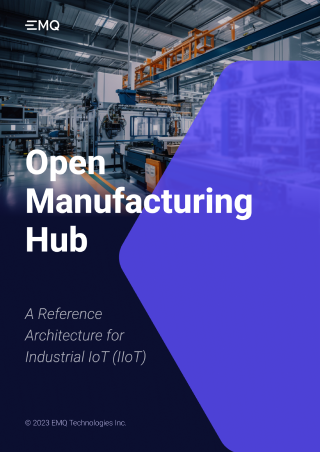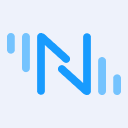IIoT Platform: Key Components and 5 Notable Solutions

Table of Contents
What Is an IIoT Platform?
An IIoT (Industrial Internet of Things) Platform, is a suite of integrated software capabilities designed to improve the efficiency, productivity, and functionality of industrial operations. It connects hardware, software, and communication technologies to facilitate the collection, analysis, and exchange of data between machines and systems within an industrial environment.
IIoT platforms allow industrial businesses to harness the power of data and analytics to optimize their operations. In addition to connecting devices and systems, they provide a comprehensive solution for managing, analyzing, and applying the data generated by these connected entities. By doing so, an IIoT platform enables businesses to make proactive, data-driven decisions that enhance their productivity and profitability.
Benefits of IIoT Platforms
Operational Efficiency
By connecting machines and systems, an IIoT platform allows for real-time monitoring and control of industrial processes. This means that businesses can identify and rectify inefficiencies promptly, reducing downtime and waste.
By providing a comprehensive view of operations, an IIoT platform enables businesses to optimize their resource allocation. They can identify which processes require more resources and which ones can be streamlined, leading to improved operational efficiency and reduced operational costs.
Predictive Maintenance
By constantly monitoring the performance and condition of machines and systems, the platform can identify signs of potential failures before they occur. This allows businesses to schedule maintenance activities proactively, thus preventing costly downtime and extending the lifespan of their equipment.
Moreover, predictive maintenance helps businesses to avoid unexpected equipment failures that can disrupt their operations and lead to significant financial losses. By predicting and preventing equipment failures, businesses can ensure the smooth and uninterrupted operation of their processes.
Enhanced Safety
Safety is a major concern in industrial environments, and an IIoT platform can significantly enhance it. By providing real-time monitoring and control of industrial processes, the platform can detect anomalies and potential hazards promptly, allowing businesses to take immediate corrective actions. This prevents accidents and protects workers from potential safety risks.
Furthermore, by collecting and analyzing safety-related data, an IIoT platform can help businesses to identify patterns and trends that can lead to accidents. This enables them to implement preventive measures and improve their safety protocols, contributing to a safer working environment.
Scalability and Flexibility
An IIoT platform can easily accommodate an increasing number of connected devices and systems, allowing businesses to scale their operations as they grow. It is also flexible in that it can be customized to suit the specific needs and requirements of a business. This means that businesses can tailor the platform to their operations, ensuring that it provides more value.
Learn more in our detailed guide to IIoT benefits (coming soon)
Key Components of an IIoT Platform
Connectivity
Connectivity in an IIoT system involves setting up efficient communication channels between the devices and ensuring the secure transfer of data. This requires advanced networking technologies and protocols that can handle the vast amounts of data generated by industrial devices.
Connectivity also relates to the interoperability of devices and systems. An effective IIoT platform should be able to connect with a wide range of devices, regardless of their make or model. This ensures that businesses can leverage their existing infrastructure without needing to invest in new hardware.
Data Processing and Analytics
With the vast amounts of data generated by connected devices, it's essential to have robust data processing capabilities. This involves collecting, cleaning, and organizing the data to make it suitable for analysis.
Advanced analytics are key to extracting valuable insights from the data. This includes predictive analytics, which can forecast future trends and anomalies based on historical data. Such insights can help businesses make informed decisions, improve operational efficiency, and even prevent potential issues before they occur.
However, data processing and analytics in an IIoT platform involve advanced machine learning algorithms that can learn from the data and improve their predictions over time. This allows the IIoT platform to adapt to changing conditions and continually enhance its performance.
Device Management
With potentially thousands of devices connected to the system, it's crucial to have efficient tools for managing these devices. Device management in an IIoT platform involves various tasks, such as device registration, configuration, monitoring, and troubleshooting. This ensures that all devices are functioning correctly and contributing to the overall performance of the system.
Device management also involves securing the devices against potential threats. This includes implementing robust security measures, such as encryption and authentication, to protect the data and prevent unauthorized access.
Application Enablement
Application enablement is a key component of an IIoT platform that often gets overlooked. This involves providing the necessary tools and services to develop, deploy, and manage applications that utilize the data from the connected devices.
Application enablement includes providing Software Development Kits (SDKs) and Application Programming Interfaces (APIs) that allow developers to build custom applications. It can also involve providing pre-built applications that can be customized to suit specific business needs.
Application enablement also involves providing a robust infrastructure to host and run these applications. This can include cloud-based services, edge computing resources, and other technologies that ensure the applications can operate effectively and deliver the desired results.
Dashboards
The dashboard is the interface that users interact with to manage and control the system. It provides a visual representation of the data and allows users to monitor the system's performance in real-time.
A good dashboard should be intuitive and easy to use, even for non-technical users. It should provide clear and concise information, with the ability to drill down into the details when necessary. It should also allow users to customize the views and reports to suit their specific needs.
The dashboard should also provide tools for managing the system. This includes tools for configuring devices, setting up data processing rules, and managing applications. It should provide alerts and notifications to keep users informed about any issues or anomalies in the system.

5 Notable IIoT Platforms
1. NeuronEX and EMQX
The combination of NeuronEX and EMQX forms a potent Industrial Internet of Things (IIoT) platform designed to excel in the challenging landscape of industrial environments. NeuronEX, serving as the Industrial Connectivity Gateway, boasts real-time, asynchronous data processing capabilities with response times as low as 100 milliseconds. It ensures the efficient collection, aggregation, and transformation of data from an extensive array of industrial devices and systems, supporting protocols like Modbus, OPC UA, BACnet, and more. This curated data is then seamlessly communicated to EMQX, an MQTT broker known for its robust messaging infrastructure, ensuring rapid and reliable data exchange while maintaining low latency.

Together, this integrated platform establishes a Unified Namespace, organizing data from diverse sources under standardized MQTT topics, simplifying data access and management. Its scalability accommodates the growth of IIoT ecosystems, and it excels in real-time data analytics, enabling data-driven decision-making and process optimization. NeuronEX and EMQX prioritize security, supporting encryption (TLS) and authentication mechanisms, ensuring the safeguarding of sensitive industrial data. This platform seamlessly integrates with other IoT applications, big data analytics tools, and cloud platforms, making it a versatile solution for comprehensive data management, analysis, and reporting within industrial operations, ultimately enhancing efficiency and competitiveness.
2. AWS IoT Core
AWS IoT Core is a managed cloud platform that lets connected devices easily interact with cloud applications and other devices. It can support billions of devices and trillions of messages, and process and route those messages to AWS endpoints and to other devices reliably and securely.

Source: AWS
One of the standout features of AWS IoT Core is its device connectivity and management capabilities. It provides automatic registration, device authentication and provisioning, and device organization and tracking. This makes it easy to manage and monitor your IoT devices at scale.
Furthermore, AWS IoT Core comes with strong data processing capabilities. It has built-in support for AWS Lambda, Amazon Kinesis, Amazon S3, and other AWS services, allowing you to process and analyze your IoT data in various ways. It also supports MQTT, HTTP, and WebSockets protocols, providing flexibility in how you connect and communicate with your devices.
3. Azure IoT Hub
Azure IoT Hub is a managed service from Microsoft that acts as a central message hub for bi-directional communication between your IoT applications and the devices it manages. It provides reliable device-to-cloud and cloud-to-device messaging at scale.

Source: Azure
Azure IoT Hub offers robust device management capabilities. It supports device identity management, device twin and direct methods for managing device state and controlling devices, and jobs for executing bulk operations. It also provides monitoring and diagnostics features to help you troubleshoot issues and maintain the health of your IoT deployment.
In addition to device management, Azure IoT Hub excels in its integration capabilities. It has built-in integration with other Azure services and supports various protocols, including MQTT, AMQP, and HTTP. This makes it easier to build and deploy complex IoT applications that require integration with other systems.
4. Oracle IoT Intelligent Applications
Oracle IoT Intelligent Applications is a suite of IoT applications that enable businesses to make data-driven decisions and optimize their operations.

Source: Oracle
One of the unique features of Oracle IoT Intelligent Applications is its predictive analytics capabilities. It can predict future outcomes based on historical data, enabling you to anticipate issues and take preventive actions. It also provides real-time analytics, allowing you to monitor your operations in real-time and make quick decisions. Oracle IoT Intelligent Applications is designed for easy integration with other Oracle applications and third-party systems.
5. PTC ThingWorx
PTC ThingWorx is another powerful IIoT platform that enables rapid development and deployment of smart, connected solutions for industrial use. ThingWorx integrates with existing enterprise systems and provides tools to create and deploy industrial IoT applications and augmented reality (AR) experiences.

Source: ThingWorx
ThingWorx offers a comprehensive set of features, including device connectivity and management, data modeling, and analytics. It also provides intuitive drag-and-drop tools for application development, making it easy to create custom IoT solutions.
In terms of security, ThingWorx provides robust features to safeguard your IIoT deployment. This includes secure device connectivity, user authorization and access control, and security event logging.
Conclusion
The rise of the Industrial Internet of Things (IIoT) has transformed how businesses approach efficiency, safety, and scalability. At the core of this transformation are IIoT platforms, integrated software solutions that combine the capabilities of hardware, software, and communication technologies to harness the vast data potential of the industrial sector.
Core components such as connectivity, data analytics, device management, application enablement, and interactive dashboards form the backbone of these platforms, enabling businesses to achieve greater visibility into their operations and make informed, proactive decisions.
